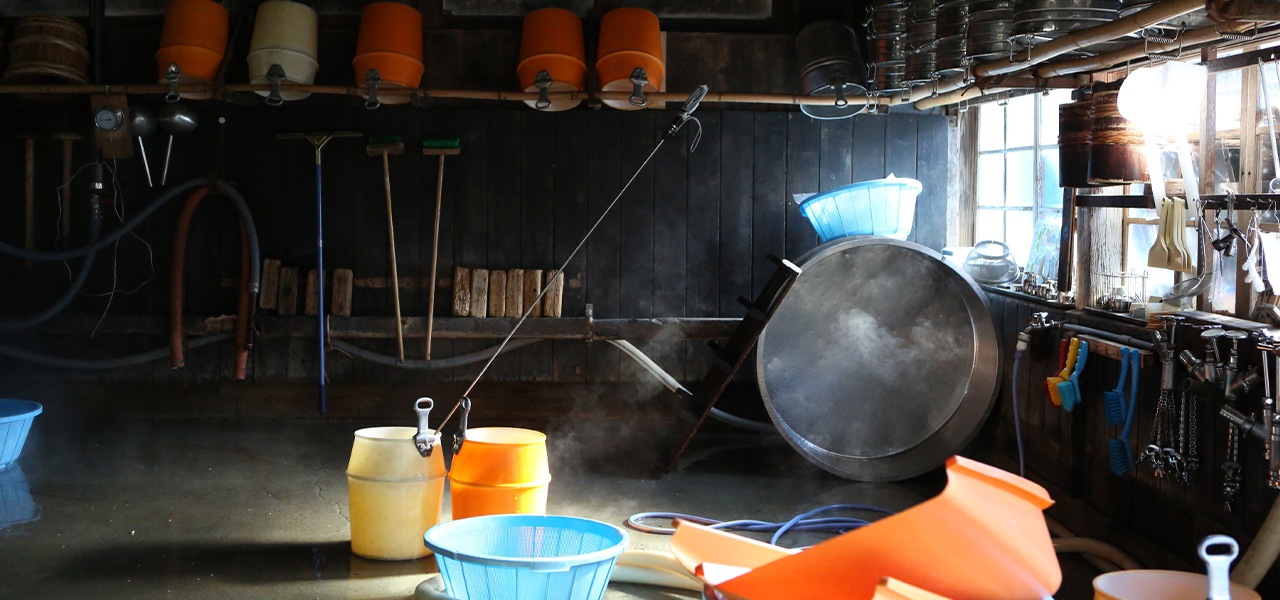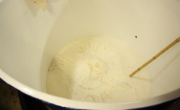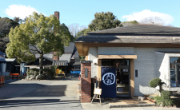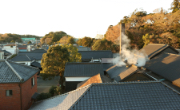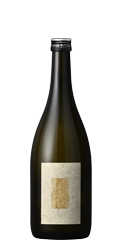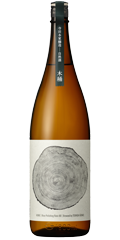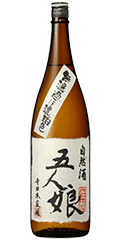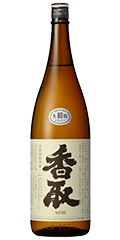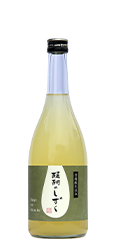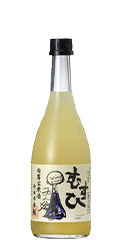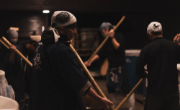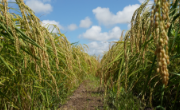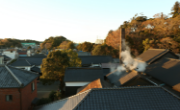Hakkodo: The Path of Fermentation
In pursuit of hakkodo: Terada’s discipline of fermentation
Terada Honke embarked on its journey to explore the possibilities of natural sake brewing when Keisuke Terada, the late 23rd-generation owner, became ill.
Keisuke joined the Terada family at age 25 when he married the daughter of this long-established sake brewery. He focused on transforming the business by pursuing more productivity, operational efficiency, and profitability through cost reduction. However, all these efforts did not materialize the transformation that he hoped to achieve, as the Japanese sake market continued to shrink, putting the business into jeopardy. Not only did the business continue to decline, his physical condition also started failing as well. During many sleepless nights in his sick bed, an idea suddenly struck him in a moment of eureka. It was the realization of a simple truth of nature that “Things don’t rot when they are fermented.” Fermentation is a consistent process of change, and when that process becomes imbalanced, things start decaying instead of continuing to ferment.
Keisuke realized that his approaches to transforming the business were derailing the course of nature and disrupting the delicate balance maintained by the microorganisms in the brewery. As a result, both his company and his physical body began to degrade. This realization served as his engine to getting back to the very basic philosophy of brewing authentic sake as the “best of all medicines.” Since the time when Keisuke embarked on this new journey three decades ago, Terada Honke has redefined itself as a brewery that pursues the potentials of fermentation and the effects of such on brewing natural sake in collaboration with all the microorganisms that lend a hand in this powerful nature-driven process.
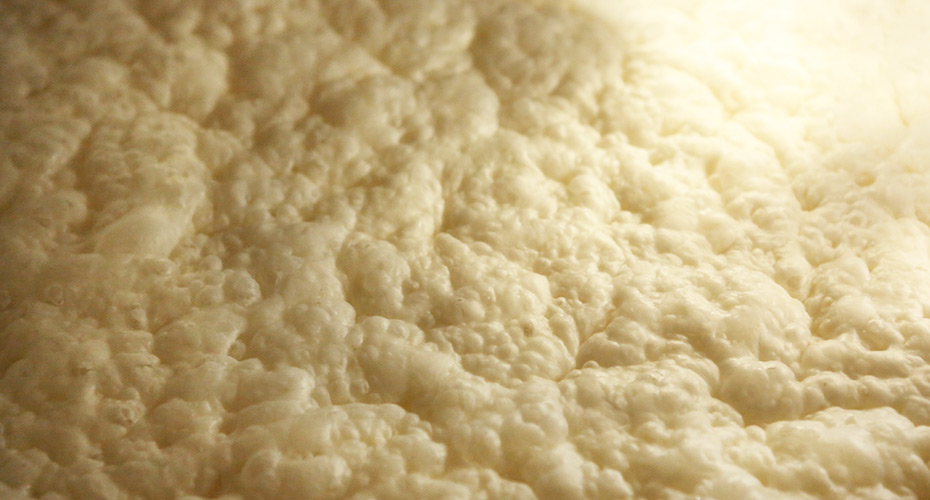
Brewing as a way of life
We are always astounded by what our microorganisms are capable of doing. The spores of the koji mold sprinkled over the steamed rice start working on mycelial development, which becomes apparent even with our naked eyes in just around 20 hours. The mold soon begins to emit fermentation heat and accelerates the transformation of the molecular structure of rice.
The process of making kimoto begins from the ritual of brewers singing traditional motosuri songs in unison. By heating moromi every day with a hot-water keg, microorganisms in the water or the air, such as nitrate-reducing bacteria, Leuconostoc mesenteroides, and Lactobacillus sake, craft a suitable environment for promoting fermentation. In the next two to three weeks, the yeasts inhabiting the brewery start jumping into the moromi so as to convert sugar into alcohol, releasing gas that foams bubbles to the surface. We always stand in awe when we witness the explosive force driven by the life energy of these invisible microorganisms in creating something from literally nothing—and it’s all observable. It makes us more and more absorbed in finding out how we can leverage this incredible force of nature in our sake-brewing process.
These tiny invisible microorganisms each have a life of their own and distinctive roles to play in promoting fermentation. The incredible strength of their life force as well as their ephemerality are in one way teaching us all about the true meaning of life.
What is life?
In order to find our answer to this very basic question, we must refer to ancient myths and religious teachings, while also relying on findings from ongoing research into natural life science.
Earth is said to have come into being 4.5 billion years ago. At first, it is believed to have been simply just a celestial body consisting of clusters of melting rocks on which no life existed. Through changes in the systems of nature, microorganisms were born and began to evolve the natural environment of this planet into a habitat where many living creatures have been able to co-exist. After many years of this transformational development, we are now standing at the forefront of this continuous evolution.
No matter how much technology advances, we still cannot find a solution that can prevent us from dying. This simple fact teaches us that we are part of a natural system that comes and goes. Because we know that our lives are finite, we try our best to shine as brightly as possible while we are alive.
When we acknowledge the fact that each and every microorganism has its own life to live, we can see the world of fermentation as a space in nature where we are co-existing with microorganisms in the long march of life.
We, human beings, are not living just by ourselves. We are simply a part of the ongoing evolution of nature, participating in this endless process along with microorganisms and all other forms of life.
The joy of living that we appreciate every day can be attributable to the deep ties that we have been building with microorganisms. We want to stay engaged in sake brewing without forgetting to appreciate these invisible tiny creatures. This is the way of thinking that constructs the underlying principles of the natural sake brewing that we pursue at Terada Honke.
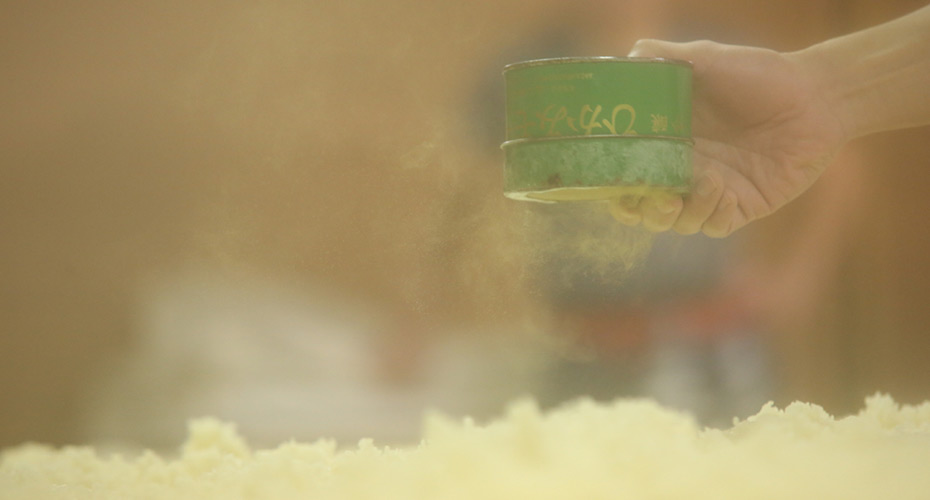
Microorganisms and the totality of nature
The natural fermentation that occurs in the sake-brewing process cannot be completed by microorganisms alone. It is a collaborative process that involves many different types of microorganisms contributing their best to fulfill their respective roles. They seem to have their own networks and ways of communication with each other, passing on the baton at the right timing to the next players in line. When they die, they also become the nutrients for other microorganisms to thrive on, and that is another important purpose of their life cycle, too.
No microorganism has the almighty power to get the job done alone. They always leave room for the next one to take over. It is the chain reaction of all the countless varieties of microorganisms that support and complement each other that keeps the successive relay rolling. Their collaborative style of interaction tells us that they are indeed “co-existing” and not “competing” with one another. That is a law of nature that we all learn to abide by.
A recent study that looked into how microorganisms communicate found that they also inhabit forests and have their own networks built underground to connect with each other.
In a study conducted in Canada, researchers reported that they found mycorrhizal fungi living underground to be exchanging information and delivering additional nutrients to the roots of weakening trees to help keep the entire forest healthy. This finding suggests that microorganisms have amazing communication abilities beyond our imagination.
We tend to forget the fact that microorganisms maintain the harmony of all living creatures so as to share a common vector of contributing to the sustainability of all of nature. They have always been the steady silent builders of a harmonious world, while many of us often prefer convenience over patience and easy solutions over difficult challenges that take time to solve but which are definitely worth tackling in the long run.
By revisiting fermentation with this mindset to appreciate and respect the laws of nature, we believe that we can find a way as civilized humans living today to also contribute to the endless efforts of maintaining the totality of nature in a way similar to such microorganisms.
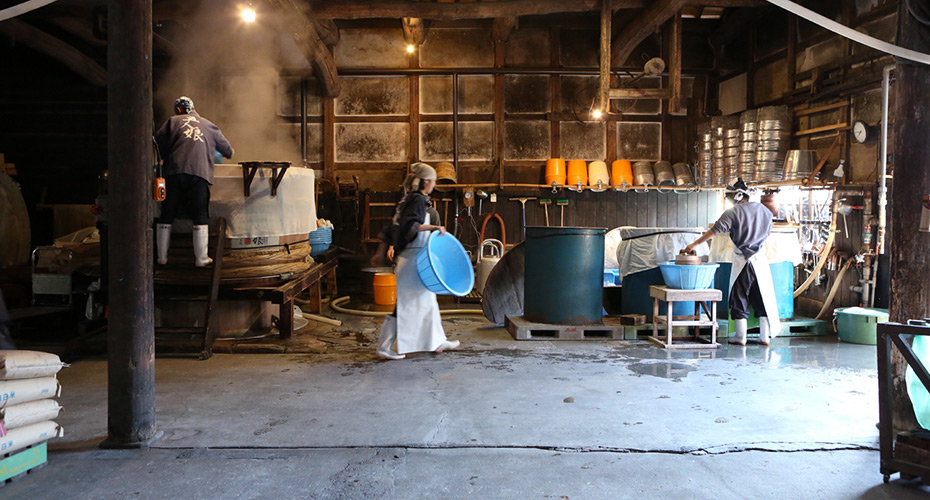
Endless change
“Things don’t rot when they are fermented.”
It was this idea that awakened Keisuke Terada, the 23rd-generation owner of Terada Honke, serving as his driving force to explore fermentation from a nature-based perspective and to document his findings in his book, titled in English as Hakkodo: The Path of Fermentation.
Sake and miso can be both preserved in good quality as long as they are fermenting. Cucumbers soon start rotting when they are left as they are but can be enjoyed for a long time when they are pickled in, for example, a bed of salted rice bran (nukamiso). What’s more interesting is that the longer they are preserved through fermentation, the more their health benefits amplify. Keisuke explains in his book that the reason why these pickled cucumbers do not rot is that they are constantly changing their physical properties through fermentation. They may look the same from the outside, but actually, they are going through a consistent process of internal changes that keep them in the fermented state. As long as they continue to accept these changes, they will keep fermenting. When they don’t, they start to rot.
Dr. Shinichi Fukuoka, who advocates the theory of “dynamic equilibrium,” explains this mechanism in layman’s terms so as to help us understand the workings of nature more easily. For this, he uses Tokyo’s main train line, the Yamanote Line, as a metaphor.
“The Yamanote Line is an old railway that continues to be in service, transporting many people around urban Tokyo. The parts that were used when this line started operating many years ago are no longer used now. They have all been replaced with new parts, but we don’t notice this. All we know is that the Yamanote Line is still running.” The same thing can be said about our own physical body. The cells and mycobionts in our body are being renewed repeatedly as a part of the metabolism that refurbishes our physical systems, but none of these changes occurring inside us are visible. These cells and mycobionts know the appropriate timing at which they should be replaced so as to keep the internal transformation process flowing without delay. The chain of these cyclic activities of self-renewal can be looked at as the generator of the fermentation energy.
Thirty years have passed since Terada Honke started focusing on natural sake brewing. As we continue to explore the possibilities of naturally made sake, we do not hesitate to take different approaches and change methods so as to define the taste that we can call the original taste of sake with the Terada Honke stamp on it. We intend to continue brewing nature-friendly sake that can not only delight all those who drink it but that can also give reverence to the microorganisms that put their lives into this act of creation, without shying away from constant efforts to reinvent ourselves and our brand.
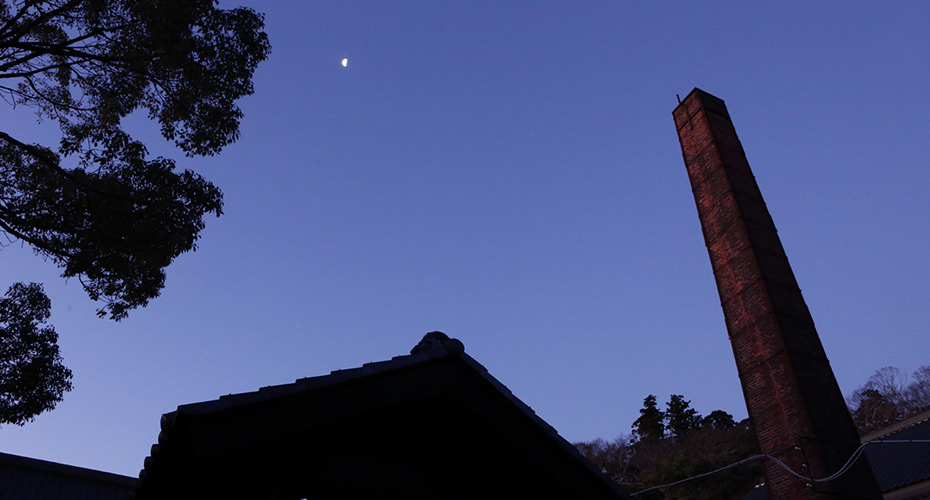
Fermentation, decay, and harmony
Fermentation takes place when microorganisms trigger organic substances that decompose and restructure into substances with different properties that have a positive effect on the human body. When these substances restructure themselves with properties that are harmful to humans, that is when decay starts. In other words, we can say that, in this context, “useful things are fermented, and useless things are rotten.”
The boundary line that separates fermentation from decay differs with culture and times, but this distinction should not be viewed from the perspective of judging which is good or bad. Rather, it should be looked at as two sides of a coin, similar to the Eastern concept of yin & yang.
We have a brand named “DAIGO NO SHIZUKU” that we make by going through a brewing process where we use both raw and steamed rice. After washing the raw rice, we have it soaked in water. Then, we add steamed rice wrapped in cloth and have both the raw and the steamed rice soaked together in water for a few days. In those few days, the water gradually starts turning white and cloudy due to the blending of the essence dissolved and released from the rice. By then, airborne microorganisms begin to gather and enter the rice soaked in turbid water, and everything starts emitting a sour smell similar to the one we normally recognize as spoiled. Once we get that far, we take out the raw rice from the water and steam it. We then put it back into that same water and add koji to accelerate the fermentation. After letting the rice and the turbid water ferment to a certain extent, we compress them to separate the water from the fermented rice. The extracted turbid water is the freshly brewed sake and the remaining solid is the sake lees.
During this brewing process, we go back and forth between fermentation and decay. The process turns toward the direction of decay when the microorganisms start emitting a smell similar to what we consider as spoiled, but these microorganisms are actually playing out the important role for making the finished sake taste great at the end. When we offer them a suitable environment to fulfill their duties, they will start working again toward fermentation instead of moving further into the direction of decaying.
So when we think about fermentation and what it can do, we feel that it is a process that can increase the microorganisms’ positive energy to try to make things turn out better and to allow them to live out their lives as productively and meaningfully as possible. It seems that the iterative back and forth between fermentation and decay makes organic substances circulate their invisible energy, and the next group of microorganisms that pick up this energy then become the driver of the fermentation process that continues to cycle and eventually spread extensively beyond the space where it initially started. By looking at this from a slightly different angle, we may be able to also say that fermentation is a process for microorganisms to capture the existing energy in nature that can make things alive, while decay is the speedy process of decomposition and the release of energy that deconstruct organic substances into molecules and atoms that can then start playing their own roles anew.
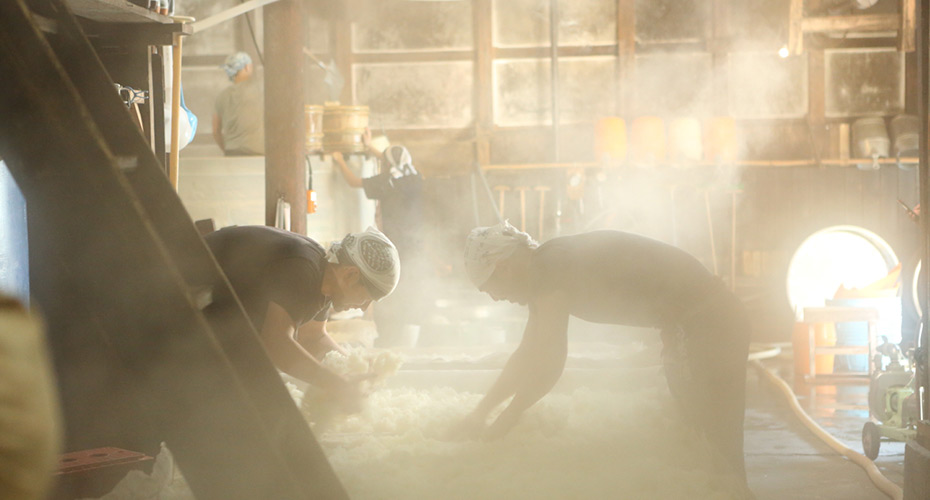
Living “fermentatively”
Thinking about fermentation is equal to thinking about life. We learn a lot from microorganisms toward seeing how we should lead our own lives.
In a comfortable environment, microorganisms work closely with one another to get the fermentation process rolling. During this collaborative period, they support and take care of each other and try to maximize their synergy. Once they fulfill their respective roles, they swiftly fade out from the main stage and invite the next group of microorganisms to come out to do their jobs. With this sense of purity and humility, they reach deep into the core of nature where they connect to the energy that makes all living things alive. Thanks to that, we receive the benefit of their work to create nourishing food that makes our life happy and healthy.
Our body is also a huge fermentation factory, so to speak. Over 100 trillion microorganisms are living and co-existing within us. At Terada Honke, we sing songs while we work to express our joy and appreciation of this symbiotic harmony, wishing the microorganisms to also work happily and actively like us to fulfill their part of the fermentation process. We believe that our positive vibes will motivate the microorganisms in our body to work vigorously particularly when we enjoy our daily lives with excitement and sheer pleasure, filled with an overflowing sense of gratitude.
The microorganisms do not compare themselves with others to judge which are superior or inferior. All they care about is their own purpose in life, and they put in their utmost effort to fulfill it. When they know that there is nothing more that they can do, they simply leave a stage for other microorganisms to shine. We must follow in their footsteps. In other words, we must strive to stay humble, lead a beautiful life, be caring and friendly, be ourselves, and try to do things in ways that make us happy rather than what may be right. We believe that our awareness to change our mindset and behaviors according to what we learned from microorganisms will be the key to “fermenting” our daily lives.
